The Van Allen Belt & The South Atlantic Anomaly


The Van Allen Belt & the South Atlantic Anomaly
NASA’s first satellite, launched in 1958, discovered two giant swaths of radiation encircling Earth. Five decades later, scientists are still trying to unlock the mysteries of these phenomena known as the Van Allen belt. The belt is named after its discoverer, American astrophysicist James Van Allen.
The near-Earth space environment is a complex interaction between the planet’s magnetic field, cool plasma moving up from Earth’s ionosphere, and hotter plasma coming in from the solar wind. This dynamic region is populated by charged particles (electrons and ions) which occupy regions known as the plasmasphere and the Van Allen radiation belt. As solar wind and cosmic rays carry fast-moving, highly energized particles past Earth, some of these particles become trapped by the planet’s magnetic field. These particles carry a lot of energy, and it is important to mention their energies when describing the belt, because there are actually two distinct belts; one with energetic electrons forming the outer belt, and a combination of protons and electrons creating the inner belt. The resulting belts, can swell or shrink in size in response to incoming particles from Earth’s upper atmosphere and changes in the solar wind. Recent studies suggest that there is boundary at the inner edge of the outer belt at roughly 7,200 miles in altitude that appears to block the ultrafast electrons from breaching the invisible shield that protects Earth.
Earth’s magnetic field doesn’t exactly line up with the planet’s rotation axis, the belts are actually tilted a bit. Because of this asymmetry, one of the shields that trap potentially harmful particles from space dips down to 200 km (124 mi) altitude.

This dip in the earth’s magnetic field allows charged particles and cosmic rays to reach lower into the atmosphere. Satellites and other low orbiting spacecraft passing through this region of space actually enter the Van Allen radiation belt and are bombarded by protons. Exposure to such radiation can wreak havoc on satellite electronics, and pose serious health risks to astronauts. This peculiar region is called the South Atlantic Anomaly.
Credit: NASA/ESA/M. Kornmesser
More Posts from Evisno and Others

I believe in free education, one that’s available to everyone; no matter their race, gender, age, wealth, etc… This masterpost was created for every knowledge hungry individual out there. I hope it will serve you well. Enjoy!
FREE ONLINE COURSES (here are listed websites that provide huge variety of courses)
Alison
Coursera
FutureLearn
open2study
Khan Academy
edX
P2P U
Academic Earth
iversity
Stanford Online
MIT Open Courseware
Open Yale Courses
BBC Learning
OpenLearn
Carnegie Mellon University OLI
University of Reddit
Saylor
IDEAS, INSPIRATION & NEWS (websites which deliver educational content meant to entertain you and stimulate your brain)
TED
FORA
Big Think
99u
BBC Future
Seriously Amazing
How Stuff Works
Discovery News
National Geographic
Science News
Popular Science
IFLScience
YouTube Edu
NewScientist
DIY & HOW-TO’S (Don’t know how to do that? Want to learn how to do it yourself? Here are some great websites.)
wikiHow
Wonder How To
instructables
eHow
Howcast
MAKE
Do it yourself
FREE TEXTBOOKS & E-BOOKS
OpenStax CNX
Open Textbooks
Bookboon
Textbook Revolution
E-books Directory
FullBooks
Books Should Be Free
Classic Reader
Read Print
Project Gutenberg
AudioBooks For Free
LibriVox
Poem Hunter
Bartleby
MIT Classics
Many Books
Open Textbooks BCcampus
Open Textbook Library
WikiBooks
SCIENTIFIC ARTICLES & JOURNALS
Directory of Open Access Journals
Scitable
PLOS
Wiley Open Access
Springer Open
Oxford Open
Elsevier Open Access
ArXiv
Open Access Library
LEARN:
1. LANGUAGES
Duolingo
BBC Languages
Learn A Language
101languages
Memrise
Livemocha
Foreign Services Institute
My Languages
Surface Languages
Lingualia
OmniGlot
OpenCulture’s Language links
2. COMPUTER SCIENCE & PROGRAMMING
Codecademy
Programmr
GA Dash
CodeHS
w3schools
Code Avengers
Codelearn
The Code Player
Code School
Code.org
Programming Motherf*?$%#
Bento
Bucky’s room
WiBit
Learn Code the Hard Way
Mozilla Developer Network
Microsoft Virtual Academy
3. YOGA & MEDITATION
Learning Yoga
Learn Meditation
Yome
Free Meditation
Online Meditation
Do Yoga With Me
Yoga Learning Center
4. PHOTOGRAPHY & FILMMAKING
Exposure Guide
The Bastards Book of Photography
Cambridge in Color
Best Photo Lessons
Photography Course
Production Now
nyvs
Learn About Film
Film School Online
5. DRAWING & PAINTING
Enliighten
Ctrl+Paint
ArtGraphica
Google Cultural Institute
Drawspace
DragoArt
WetCanvas
6. INSTRUMENTS & MUSIC THEORY
Music Theory
Teoria
Music Theory Videos
Furmanczyk Academy of Music
Dave Conservatoire
Petrucci Music Library
Justin Guitar
Guitar Lessons
Piano Lessons
Zebra Keys
Play Bass Now
7. OTHER UNCATEGORIZED SKILLS
Investopedia
The Chess Website
Chesscademy
Chess.com
Spreeder
ReadSpeeder
First Aid for Free
First Aid Web
NHS Choices
Wolfram Demonstrations Project
Please feel free to add more learning focused websites.
*There are a lot more learning websites out there, but I picked the ones that are, as far as I’m aware, completely free and in my opinion the best/ most useful.
Galaxies: Types and morphology
A galaxy is a gravitationally bound system of stars, stellar remnants, interstellar gas, dust, and dark matter. Galaxies range in size from dwarfs with just a few hundred million (108) stars to giants with one hundred trillion (1014) stars, each orbiting its galaxy’s center of mass.

Galaxies come in three main types: ellipticals, spirals, and irregulars. A slightly more extensive description of galaxy types based on their appearance is given by the Hubble sequence.

Since the Hubble sequence is entirely based upon visual morphological type (shape), it may miss certain important characteristics of galaxies such as star formation rate in starburst galaxies and activity in the cores of active galaxies.
Ellipticals

The Hubble classification system rates elliptical galaxies on the basis of their ellipticity, ranging from E0, being nearly spherical, up to E7, which is highly elongated. These galaxies have an ellipsoidal profile, giving them an elliptical appearance regardless of the viewing angle. Their appearance shows little structure and they typically have relatively little interstellar matter. Consequently, these galaxies also have a low portion of open clusters and a reduced rate of new star formation. Instead they are dominated by generally older, more evolved stars that are orbiting the common center of gravity in random directions.
Spirals

Spiral galaxies resemble spiraling pinwheels. Though the stars and other visible material contained in such a galaxy lie mostly on a plane, the majority of mass in spiral galaxies exists in a roughly spherical halo of dark matter that extends beyond the visible component, as demonstrated by the universal rotation curve concept.
Spiral galaxies consist of a rotating disk of stars and interstellar medium, along with a central bulge of generally older stars. Extending outward from the bulge are relatively bright arms. In the Hubble classification scheme, spiral galaxies are listed as type S, followed by a letter (a, b, or c) that indicates the degree of tightness of the spiral arms and the size of the central bulge.
Barred spiral galaxy

A majority of spiral galaxies, including our own Milky Way galaxy, have a linear, bar-shaped band of stars that extends outward to either side of the core, then merges into the spiral arm structure. In the Hubble classification scheme, these are designated by an SB, followed by a lower-case letter (a, b or c) that indicates the form of the spiral arms (in the same manner as the categorization of normal spiral galaxies).
Ring galaxy

A ring galaxy is a galaxy with a circle-like appearance. Hoag’s Object, discovered by Art Hoag in 1950, is an example of a ring galaxy. The ring contains many massive, relatively young blue stars, which are extremely bright. The central region contains relatively little luminous matter. Some astronomers believe that ring galaxies are formed when a smaller galaxy passes through the center of a larger galaxy. Because most of a galaxy consists of empty space, this “collision” rarely results in any actual collisions between stars.
Lenticular galaxy

A lenticular galaxy (denoted S0) is a type of galaxy intermediate between an elliptical (denoted E) and a spiral galaxy in galaxy morphological classification schemes. They contain large-scale discs but they do not have large-scale spiral arms. Lenticular galaxies are disc galaxies that have used up or lost most of their interstellar matter and therefore have very little ongoing star formation. They may, however, retain significant dust in their disks.
Irregular galaxy

An irregular galaxy is a galaxy that does not have a distinct regular shape, unlike a spiral or an elliptical galaxy. Irregular galaxies do not fall into any of the regular classes of the Hubble sequence, and they are often chaotic in appearance, with neither a nuclear bulge nor any trace of spiral arm structure.
Dwarf galaxy

Despite the prominence of large elliptical and spiral galaxies, most galaxies in the Universe are dwarf galaxies. These galaxies are relatively small when compared with other galactic formations, being about one hundredth the size of the Milky Way, containing only a few billion stars. Ultra-compact dwarf galaxies have recently been discovered that are only 100 parsecs across.
Interacting

Interactions between galaxies are relatively frequent, and they can play an important role in galactic evolution. Near misses between galaxies result in warping distortions due to tidal interactions, and may cause some exchange of gas and dust. Collisions occur when two galaxies pass directly through each other and have sufficient relative momentum not to merge.
Starburst

Stars are created within galaxies from a reserve of cold gas that forms into giant molecular clouds. Some galaxies have been observed to form stars at an exceptional rate, which is known as a starburst. If they continue to do so, then they would consume their reserve of gas in a time span less than the lifespan of the galaxy. Hence starburst activity usually lasts for only about ten million years, a relatively brief period in the history of a galaxy.
Active galaxy
A portion of the observable galaxies are classified as active galaxies if the galaxy contains an active galactic nucleus (AGN). A significant portion of the total energy output from the galaxy is emitted by the active galactic nucleus, instead of the stars, dust and interstellar medium of the galaxy.

The standard model for an active galactic nucleus is based upon an accretion disc that forms around a supermassive black hole (SMBH) at the core region of the galaxy. The radiation from an active galactic nucleus results from the gravitational energy of matter as it falls toward the black hole from the disc. In about 10% of these galaxies, a diametrically opposed pair of energetic jets ejects particles from the galaxy core at velocities close to the speed of light. The mechanism for producing these jets is not well understood.

The main known types are: Seyfert galaxies, quasars, Blazars, LINERS and Radio galaxy.
source
images: NASA/ESA, Hubble (via wikipedia)
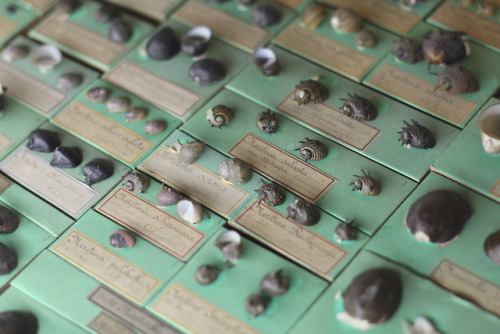
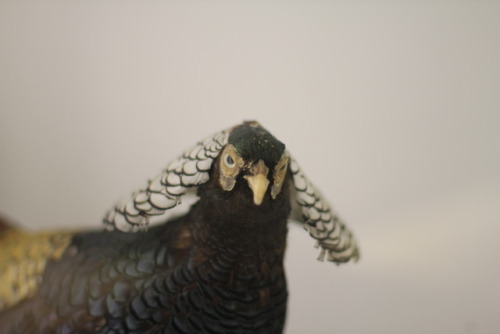
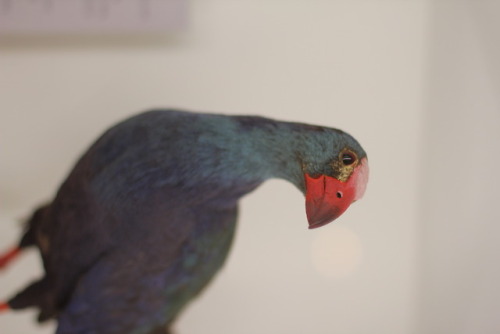




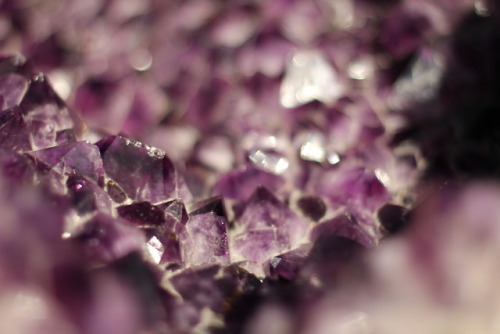

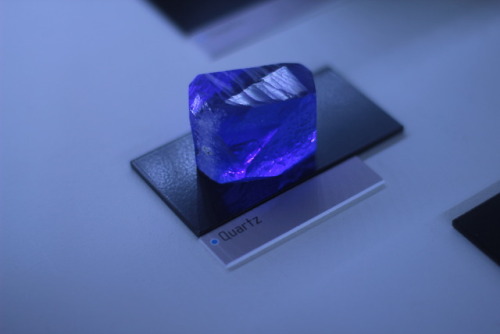
I visited Nantes’ Natural History Museum.






death of a star by a supernova explosion,
and the birth of a black hole
I made my 22 mo old daughter an LED light suit costume. Looks hilarious!
> This might just be the coolest baby costume in the entire world.
> Her voice and movement remind me of Boo from Monsters Inc.
> You should probably let her run loose in all the dark areas of your neighborhood on Halloween night.
> Sweet, I can’t wait to show my 421 month old girlfriend this!





Nearly every day Cassini sends back something amazing to sit and wonder at.
1) Saturn’s rings, 15 July 2014
2) Tethys / Saturn’s rings 14 July 2014
3) Disk of Saturn 14 July 2014
4) Prometheus / F Ring 13 July 2014
5) Pan in the Encke Gap 13 July 2014
All raw and unprocessed images from saturn.jpl.nasa.gov
Solar System: Things to Know This Week
Mark your calendars for summer 2018: That’s when we’re launching a spacecraft to touch the sun.
In honor of our first-ever mission to the heart of the solar system, this week we’re delving into the life and times of this powerful yellow dwarf star.

1. Meet Parker
Parker Solar Probe, our first mission to go to the sun, is named after Eugene Parker, an American astrophysicist who first theorized that the sun constantly sends out a flow of particles and energy called the solar wind. This historic mission will explore one of the last regions of the solar system to be visited by a spacecraft and help scientists unlock answers to questions they’ve been pondering for more than five decades.

2. Extra SPF, Please
Parker Solar Probe will swoop within 4 million miles of the sun’s surface, facing heat and radiation like no spacecraft before it. The mission will provide new data on solar activity to help us better understand our home star and its activity - information that can improve forecasts of major space-weather events that could impact life on Earth.

3. Majorly Massive
The sun is the center of our solar system and makes up 99.8 percent of the mass of the entire solar system. If the sun were as tall as a typical front door, Earth would be about the size of a nickel.
4. Different Spin
Since the sun is not a solid body, different parts of the sun rotate at different rates. At the equator, the sun spins once about every 25 days, but at its poles the sun rotates once on its axis every 36 Earth days.

5. Can’t Stand on It
The sun is a star and a star doesn’t have a solid surface. Rather, it’s a ball of ionized gas 92.1% hydrogen (H2) and 7.8% helium (He) held together by its own gravity.
6. Center of Attention
The sun isn’t a planet, so it doesn’t have any moons. But, the sun is orbited by eight planets, at least five dwarf planets, tens of thousands of asteroids, and hundreds of thousands to trillions of comets and icy bodies.

7. It’s Hot in There
And we mean really, really hot. The temperature at the sun’s core is about 27 million degrees Fahrenheit. However, its atmosphere, the corona, can reach temperatures of 3 million degrees. (That’s as if it got hotter the farther away you got from a fire, instead of cooler!) Parker Solar Probe will help scientists solve the mystery of why the corona’s temperature is so much higher than the surface.

8. Travel Conditions
The sun influences the entire solar system, so studying it helps us better understand the space weather that our astronauts and spacecraft travel through.
9. Life on the Sun?
Better to admire from afar. Thanks to its hot, energetic mix of gases and plasma, the sun can’t be home to living things. However, we can thank the sun for making life on Earth possible by providing the warmth and energy that supply Earth’s food chain.
10. Chance of a Lifetime
Last but not least, don’t forget that the first total solar eclipse to sweep across the U.S. from coast-to-coast since 1918 is happening on August 21, 2017. Our toolkit has you need to know to about it.
Want to learn more? Read our full list of the 10 things to know this week about the solar system HERE.
Make sure to follow us on Tumblr for your regular dose of space: http://nasa.tumblr.com



All the times science fiction became fact
I don’t usually go for these really-big-ads-disguised-as-infographics (Really? Sci-fi ink & toner?), but this one was too cool to pass up.
Unfortunately, no hoverboards yet. But we’ve still got 15 months before time runs out on that one:
Bonus: Why are some science fiction authors so good at predicting the future? Check out this episode of It’s Okay To Be Smart where I talk all about that:
(via io9)
‘아렌델’은 빅뱅 이후 첫 10억년 이내에 존재했던 별입니다. 우리 지구에 닿기까지 129억년이나 걸린 것이지요!
우리 태양보다 적어도 50배 크고, 몇백만 배 밝아요. 평소에는 지구에서 볼 수 없지만, 우리와 ‘아렌델’ 사이에 있는 은하단이 렌즈 역할을 했습니다!
A View into the Past

Our Hubble Space Telescope just found the farthest individual star ever seen to date!
Nicknamed “Earendel” (“morning star” in Old English), this star existed within the first billion years after the universe’s birth in the big bang. Earendel is so far away from Earth that its light has taken 12.9 billion years to reach us, far eclipsing the previous single-star record holder whose light took 9 billion years to reach us.
Though Earendel is at least 50 times the mass of our Sun and millions of times as bright, we’d normally be unable to see it from Earth. However, the mass of a huge galaxy cluster between us and Earendel has created a powerful natural magnifying glass. Astronomers expect that the star will be highly magnified for years.
Earendel will be observed by NASA’s James Webb Space Telescope. Webb's high sensitivity to infrared light is needed to learn more about this star, because its light is stretched to longer infrared wavelengths due to the universe's expansion.
-
 s1eepingpatterns liked this · 6 months ago
s1eepingpatterns liked this · 6 months ago -
 tresfoufou liked this · 2 years ago
tresfoufou liked this · 2 years ago -
 roh-nin liked this · 2 years ago
roh-nin liked this · 2 years ago -
 cascadingshower reblogged this · 2 years ago
cascadingshower reblogged this · 2 years ago -
 acidosss liked this · 2 years ago
acidosss liked this · 2 years ago -
 variousvicarious liked this · 2 years ago
variousvicarious liked this · 2 years ago -
 nirvanaisheaven reblogged this · 2 years ago
nirvanaisheaven reblogged this · 2 years ago -
 nirvanaisheaven liked this · 2 years ago
nirvanaisheaven liked this · 2 years ago -
 guyaj liked this · 2 years ago
guyaj liked this · 2 years ago -
 trastiempos reblogged this · 2 years ago
trastiempos reblogged this · 2 years ago -
 trastiempos liked this · 2 years ago
trastiempos liked this · 2 years ago -
 urtopia reblogged this · 2 years ago
urtopia reblogged this · 2 years ago -
 urtopia liked this · 2 years ago
urtopia liked this · 2 years ago -
 thelittleblacklamb liked this · 2 years ago
thelittleblacklamb liked this · 2 years ago -
 qdarko reblogged this · 2 years ago
qdarko reblogged this · 2 years ago -
 andy300sblog liked this · 2 years ago
andy300sblog liked this · 2 years ago -
 dotglobal reblogged this · 2 years ago
dotglobal reblogged this · 2 years ago -
 dotglobal liked this · 2 years ago
dotglobal liked this · 2 years ago -
 myliforyou liked this · 3 years ago
myliforyou liked this · 3 years ago -
 dead-or-alive liked this · 4 years ago
dead-or-alive liked this · 4 years ago -
 rh35211 reblogged this · 5 years ago
rh35211 reblogged this · 5 years ago -
 pc48 reblogged this · 5 years ago
pc48 reblogged this · 5 years ago -
 vicjaling liked this · 5 years ago
vicjaling liked this · 5 years ago -
 eopederson liked this · 5 years ago
eopederson liked this · 5 years ago -
 lektim reblogged this · 5 years ago
lektim reblogged this · 5 years ago -
 lektim liked this · 5 years ago
lektim liked this · 5 years ago -
 plurdledgabbleblotchits reblogged this · 5 years ago
plurdledgabbleblotchits reblogged this · 5 years ago -
 looking-like-a-saint-blog reblogged this · 5 years ago
looking-like-a-saint-blog reblogged this · 5 years ago -
 z-bambis-cosmos reblogged this · 6 years ago
z-bambis-cosmos reblogged this · 6 years ago -
 therodentqueen liked this · 6 years ago
therodentqueen liked this · 6 years ago -
 sparklyvalley liked this · 6 years ago
sparklyvalley liked this · 6 years ago -
 crystallinewolff reblogged this · 6 years ago
crystallinewolff reblogged this · 6 years ago -
 z-bambis-cosmos reblogged this · 6 years ago
z-bambis-cosmos reblogged this · 6 years ago -
 raw-alien-sex liked this · 6 years ago
raw-alien-sex liked this · 6 years ago -
 i-s-d-m-8 liked this · 6 years ago
i-s-d-m-8 liked this · 6 years ago -
 pedromasari reblogged this · 6 years ago
pedromasari reblogged this · 6 years ago -
 pedromasari liked this · 6 years ago
pedromasari liked this · 6 years ago -
 gosiawolodzin liked this · 6 years ago
gosiawolodzin liked this · 6 years ago -
 brm-srv liked this · 6 years ago
brm-srv liked this · 6 years ago -
 i-eat-jam-4-breakfast liked this · 6 years ago
i-eat-jam-4-breakfast liked this · 6 years ago -
 alliharkness reblogged this · 6 years ago
alliharkness reblogged this · 6 years ago



